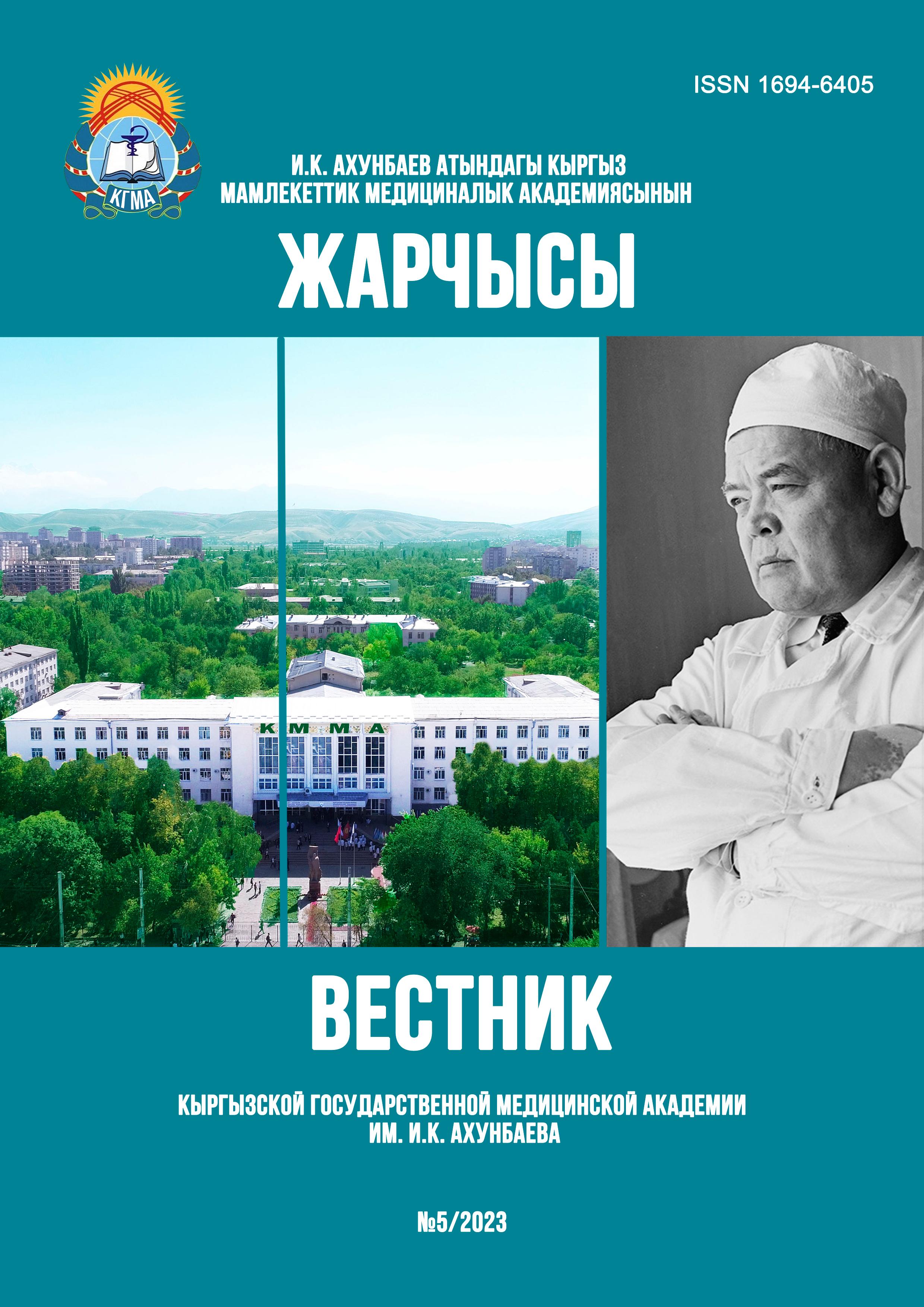ECHINOCOCCOSIS IN YAKUTIA
DOI:
https://doi.org/10.54890/1694-6405_2023_5_33Abstract
This article presents materials on the study of epizootology and epidemiology of echinococcosis in Yakutia. Echinococcosis in Yakutia occurs in both wild and domestic animals, and is one of the most dangerous infestations for humans. According to the degree of infection with mature cestodes and cystic echinococcosis of animals, the presence of natural foci is determined, where the fundamental factor is the circulation of the transmission of invasion from the final hosts to intermediate ones and vice versa. In most cases, human infection with echinococcosis occurs through contact with carnivorous animals, removal, processing of skins of harvested carnivores, with the carcass of harvested wolves, foxes exposed "for exotic photographing", when bringing frozen
carcasses of animals into residential premises and using wild plants contaminated with echinococcus oncospheres (berries, onions, herbs, etc.). Genotypes cestodes and larval cyst associated with the life cycles of livestock and found in the wild, which include wolves and moose, reindeer as hosts.
Keywords:
wild and domestic animals, population, Yakutia, infestation, species, Echinococcus granulosus, Alveococcus multilocularis, genotype.References
1. Игнатьева М.Е., Самойлова И.Ю., Будацыренова Л.В., Николаева Г.Г., Корнилова М.В., Коколова Л.М., и др. Эпидемиологическая ситуация по биогельминтозам в Республике Саха (Якутия). Дальневосточный журнал инфекционной патологии. 2017;(33):25-32. [Ignatieva M.E., Samoylova I.Yu., Budatsyrenova L.V., Nikolaeva G.G., Kornilova M.V., Kokolova L.M., et al. Epidemiological situation of biohelminthiasis in the Republic of Sakha (Yakutia). Far Eastern Journal of Infectious Pathology. 2017;33(33):25-32. (In Russ.).]
2. Коколова Л.М., Охлопков И.М., Гаврильева Л.Ю., Сивцева Е.В., Степанова С.М., Дулова С.В. и др. Оценка Эпизоотологической ситуации по эхинококкозу у диких плотоядных и копытных животных в Якутии. Ветеринария и кормление. 2022;4:29-32. [Kokolova L.M., Okhlopkov I.M., Gavrilyeva L.Yu., Sivtceva E.V., Stepanova S.M., Dulova S.V. et al. Assessment of the epizootological situation of echinococcosis in wild carnivores and ungulates in Yakutia. Veterinaria i kormlenie. 2022;4:29-32. (In Russ.).] https://doi.org/10.30917/ATT-VK-1814-9588-2022-4-8
3. Коколова Л.М., Охлопков И.М., Слепцов Е.С., Гаврильева Л.Ю., Мамаев Н.В., Степанова С.М., и др. Экология лося в Якутии и паразитирующий опасный гельминт Echinococcus granulosus. Иппология и ветеринария. 2022;2(44):65-72 [Kokolova L.M., Okhlopkov I.M., Sleptsov E.S., et al. Ecology of moose in Yakutia and parasitic dangerous helminth. Hippology i veterinary medicine. 2022;2(44): 65-72. (In Russ.).]
4. Коколова Л.М., Слепцов Е.С., Гаврильева Л.Ю. Экосистема Арктической зоны Якутии и проблемы северного оленеводства. Иппология и ветеринария. 2023;2(48):189-195. [Kokolova L.M., Sleptsov E.S., Gavrilyeva L.Yu. The ecosystem of the Arctic zone of Yakutia and the problems of reindeer husbandry. Hippology i veterinary medicine. 2023;2(48):189-195. (In Russ.).] https://doi.org/10/52419/2225-1537/2023.2
5. Коколова Л.М., Слепцов Е.С., Гаврильева Л.Ю. Эпизоотическая ситуация по особоопасным гельминтозам псовых (Canidae) – белого песца (Vulpes lagopus) на территории Арктической Якутии. Ветеринария и кормление. 2023;2:33-36. [Kokolova L.M., Sleptsov E.S., Gavrilyeva L.Yu. Epizootic situation on especially dangerous helminthiasis of the Canidae family – the white Arctic fox (Vulpes lagopus) on the territory of Arctic Yakutia. Veterinary i kormlenie. 2023;2:33-36. (In Russ.).] https://doi.org/10.30917/ATT-VK-1814-9588-2023-2-8
6. Nakao M, Sako Y, Ito A. 2003. Isolation of polymorphic microsatellite loci from the tapeworm Echinococcus multilocularis. Infect Genet Evol. 2003;3(3):159–163. https://doi.org/10.1016/s1567-1348(03)00070-4
7. Dinkel A, von Nickisch-Rosenegk M, Bilger B, Merli M, Lucius R, Romig T. Detection of Echinococcus multilocularis in the definitive host: coprodiagnosis by PCR as an alternative to necropsy. Journal of Clinical Microbiology. 1998;36:1871–1876. https://doi.org/10.1128/JCM.36.7.1871-1876.1998
8. Kern P, Menezes da Silva A, Akhan O, Müllhaupt B, Vizcaychipi KA, Budke C, et al. Chapter Four - The Echinococcoses: Diagnosis, Clinical Management and Burden of Disease. Advances in parasitology. 2017;96:259–369. https://doi.org/10.1016/bs.apar.2016.09.006
9. Addy F, Wassermann M, Kagendo D, Ebi D, Zeyhle E, Elmahdi IE, et al. Genetic differentiation of the G6/7 cluster of Echinococcus canadensis based on mitochondrial marker genes. Int J Parasitol. 2017;47(14):923–931. https://doi.org/https://doi.org/10.1016/j.ijpara.2017.06.003
10. Laurimäe T, Kinkar L, Moks E, Bagrade G, Saarma U. Exploring the genetic diversity of genotypes G8 and G10 of the Echinococcus canadensis cluster in Europe based on complete mitochondrial genomes (13550 – 13552 bp). Parasitology. 2023;150(7):631-637. https://doi.org/10.1017/s0031182023000331
11. Laurimäe T, Kinkar L, Moks E, Romig T, Omer RA, Casulli A.et al. Molecular phylogeny based on six nuclear genes suggests that Echinococcus granulosus sensu lato genotypes G6/G7 and G8/G10 can be regarded as two distinct species. Parasitology. 2018;145(14):1929–1937. https://doi.org/10.1017/s0031182018000719
12. Lymbery AJ., Jenkins EJ., Schurer JM., Thompson RCA. Echinococcus canadensis, E. borealis, and E. intermedius. What’s in a name? Trends in parasitology. 2015;31(1):23–29. https://doi.org/10.1016/j.pt.2014.11.003
13. Romig T, Deplazes P, Jenkins D, Giraudoux P. Ecology and Life Cycle Patterns of Echinococcus Species. Advances in parasitology. 2017;95:213–314. https://doi.org/10.1016/bs.apar.2016.11.002
14. Jia WZ, Yan HB, Guo AJ, Zhu XQ, Wang YC, Shi WG, et al., Complete mitochondrial genomes of Taenia multiceps, T. hydatigena and T. pisiformis: additional molecular markers for a tapeworm genus of human and animal health significance. BMC Genom. 2010;11:447. doi: https://doi.org/10.1186/1471-2164-11-447
15. Yanagida T, Lavikainen A, Hoberg EP, Konyaev S, Ito A, Sato MO, at al. Specific status of Echinococcus canadensis (Cestoda: Taeniidae) inferred from nuclear and mitochondrial gene sequences. International journal for parasitology. 2017;47(14):971–979. https://doi.org/10.1016/j.ijpara.2017.07.001
16. Thompson RC. Biology and Systematics of Echinococcus. Advances in parasitology. 2017;95:65–110. https://doi.org/10.1016/bs.apar.2016.07.001







